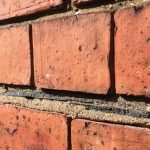How Landlords Deal With Mould And Condensation
Most rented properties suffer from damp at some point during a tenancy and, as a landlord and property owner, it is an issue you really need to keep on top of. While a bit of mould on the bathroom ceiling might your tenant’s fault for not ventilating the room properly while they shower or have a bath, it is your responsibility totally to ensure the property is maintained in the best possible condition.
If mould is left, what starts as a simple patch of mildew can grow and spread, then develop into mould. And if it is not treated and removed, mould can damage furniture and belongings, cause mite infestations and may result in serious health implications for your tenants.
Inhaling or touching mould spores can cause allergic reactions in your tenants, possible asthma attacks, respiratory infections and even affect the immune system.
Consider this as well, if the tenant complains to your local authority, and they approve the complaint and you have not done anything to solve the mould problem, you could end up being fined and even unable to evict the tenant. So, What Are The 3 Types Of Damp To Watch For?
What Is Rising Damp?
Rising damp is caused by ground water soaking up through the bottom of walls or the walls and it is visible as damp patches or sometimes tidemarks on the bottom of the walls, or big areas of black mould. You are also likely to be able to smell it before you see it.
The solution to rising damp? It can often be corrected through the installation of a damp-proof membrane or damp-proof course. However, you should seek specialist advice through a damp proofing specialist.
What Is Penetrating Damp?
Caused by rainwater working its way in through the brickwork of your home because of the cracks and failing mortar and it often occurs when guttering is damaged, and water is allowed to run down the outside of the walls. Indoors, you could notice patches towards the tops of walls, or perhaps around the windows, which suggests they maybe have not been sealed properly or the seal has degraded over time.
If you see a white residue or ‘tide mark’ on the outside of the property, that is where salts in the rainwater have been left behind when the penetrating water itself evaporates – known as efflorescence.
So, as the rain season and winter approaches check:
– have the guttering checked to make sure there aren’t any cracks or gaps
– check the roof to make sure it’s wind and watertight
– look for any signs of cracking in brickwork or missing mortar.
The solution to penetrating damp? This is a temporary problem that should be easily fixed by making repairs to the fabric of the property. However, be aware that you might need to treat the inside as well as the outside, to ensure you remove any risk of mould growth talk to a damp proofing expert.
What Is Condensation?
This is the most common type of damp there and it is rare to find a rented property without it! When there is a big difference between the inside and outside temperatures – which often happens if a property isn’t heated properly or consistently – the condensation forms as water on windows.
In the rooms where excess moisture is generated – the bathroom, kitchen and anywhere that your tenants maybe dry washing inside – unless there is ventilation to allow the moisture to escape, it will settle.
The solution to condensation? First, make sure there is enough ventilation in rooms where excess moisture is created. It is a good idea to maybe hard-wire extractor fans to light switches in the bathroom and kitchen and there should always be an opening window where possible.
Second, ensure the heating works properly and is as cost-effective as possible, to encourage tenants to use it as required in the winter. Where you find the mildew forming, clean it off straight away and treat the area with an anti-mould spray, then when you next redecorate, use specialist anti-mould paint on all the ceilings.
Open windows and/or switch on extractors when cooking in the kitchen, using the bathroom and drying washing
Wipe off condensation on windows
Open your bedroom window for 15 minutes each morning
Keep the inside temperature as constant as possible
Don’t push furniture up against walls, where moisture can get trapped
Condensation Control Devon
Orchard Preservations works throughout the South West, including areas such as Exeter, Chard, Newton Abbot, Dorset, Axminster and Taunton. For over 20 years we have specialised in preservation for your home and business, including offering reliable condensation solutions. We use tried and tested methods, advanced equipment, and skilled teams to provide a long-lasting result for you. Contact us for more information on our services.




